The Easiest Vegetables to Grow from Seed (Beginner-Friendly Picks)
Starting from seed doesn’t have to be complicated. Here are the easiest vegetables to grow from seed, plus simple tips to help beginners see quick success.
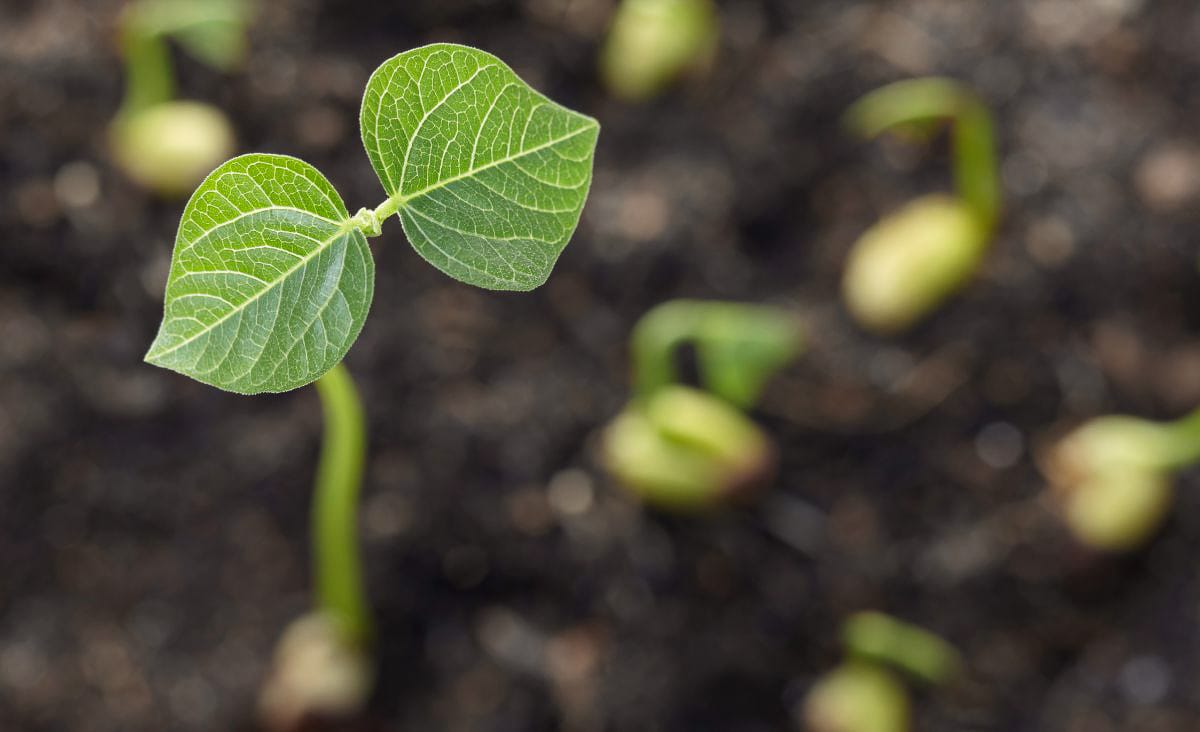
Starting a garden from seed can feel like a big leap, especially if you’re new to gardening. I remember staring at those little packets years ago wondering if anything would sprout or if I was about to donate eight dollars to the soil gods. Thankfully, I learned pretty quickly that some vegetables are incredibly forgiving. They sprout fast, grow easily, and don’t need much from you.
That’s what this guide is all about. These are the easiest vegetables to grow from seed, whether you’re working with a few pots on the porch or a big backyard garden. I’ll walk you through the crops that practically grow themselves and the stuff I had to figure out the hard way.
What Actually Makes a Seed ‘Beginner-Friendly’?
Some seeds just want to grow. They germinate quickly, tolerate uneven watering, and bounce back from beginner mistakes. Others are a little high-maintenance and want warm soil or an indoor start. Knowing which crops want to be direct-sown makes the whole season easier. If you’ve ever stared at seed packets feeling stuck, this will help you decide what should be started in the soil and what should be started inside.
At-a-Glance: The Easiest Vegetables to Grow from Seed
If you want some easy wins to start with, try:
- Radishes
- Lettuce
- Beans
- Peas
- Zucchini
- Carrots
- Spinach
These crops germinate quickly, don’t need special equipment, and tolerate real-life imperfections… like forgetting to water for a day or planting a little too shallow.
The Easiest Vegetables to Grow from Seed
These are my go-to recommendations when someone is just getting started. I included how fast they sprout, whether they work in pots, and what usually goes wrong.
Radishes
Radishes are one of the fastest vegetables you can grow. If you’re impatient (hi, it’s me), this is your crop. Radishes sprout in just a few days and mature in about 20–30. They prefer cool weather and loose soil, but they’re far more forgiving than most root crops.
Germination: 3–7 days
Best season: Early spring or fall
Good for containers? Yes
Troubleshooting: If you get big leafy tops and no real radish, they were either crowded or too warm.
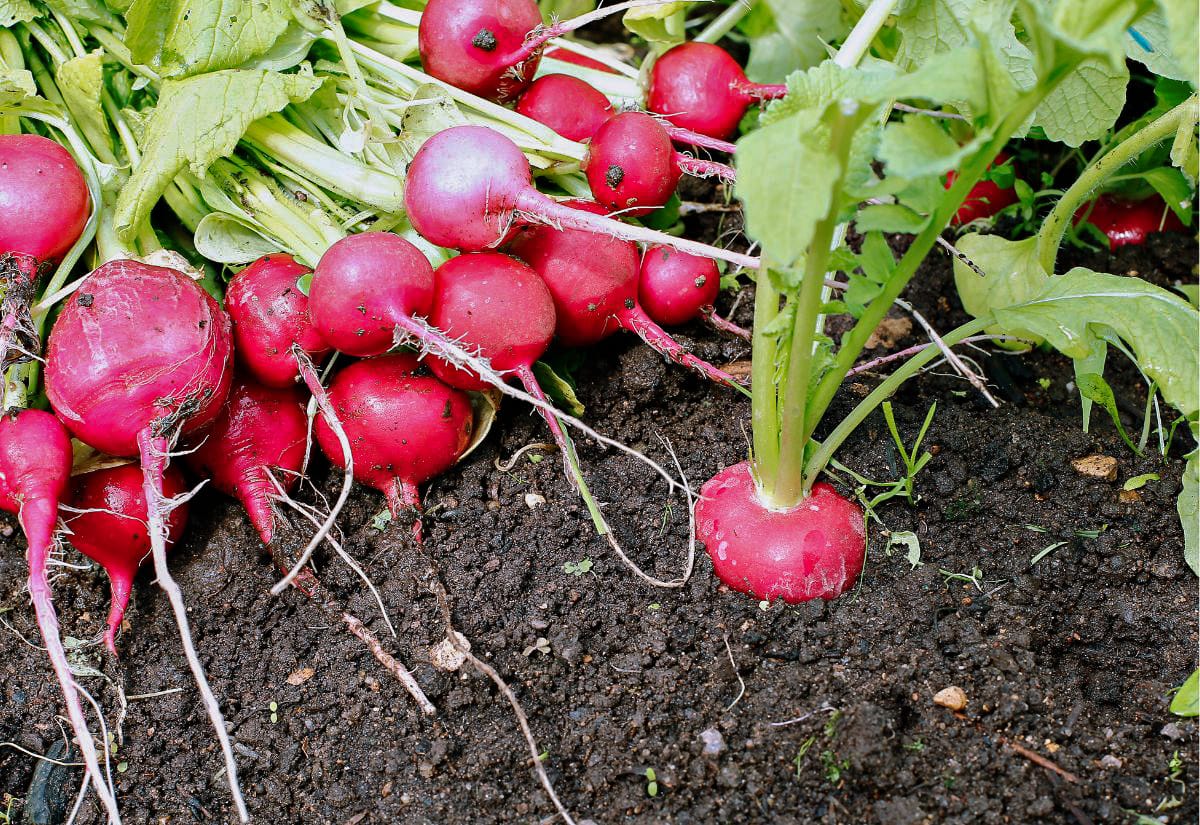
Lettuce
Lettuce is a quick win for beginners. It doesn’t mind partial shade, which makes it a great option if your garden doesn’t get full sun from dawn to dusk. Loose-leaf varieties give you cut-and-come-again harvests, so you can pick a salad in 3–4 weeks.
Germination: 2–10 days
Best season: Spring and fall
Good for containers? Absolutely
Troubleshooting: If your lettuce tastes bitter, it’s probably getting too much heat.
Beans
Beans sprout quickly and don’t need any special care besides regular watering. Bush beans are especially beginner-friendly because they don’t need a trellis. Pole beans give bigger yields but do need support.
Germination: 5–10 days
Best season: Late spring and summer
Good for containers? Bush beans, yes
Troubleshooting: If flowers drop without forming pods, your soil might be too dry.
Peas
Peas love cool weather and they don’t mind being planted early, even when the ground still feels cold to the touch. Snap peas are great for snacking straight off the vine, and snow peas grow well in tight spaces.
Germination: 7–14 days
Best season: Early spring or fall
Good for containers? Yes, with a small trellis
Troubleshooting: Peas struggling to climb? Give them something skinny to climb. Their tendrils don’t love bulky trellises.
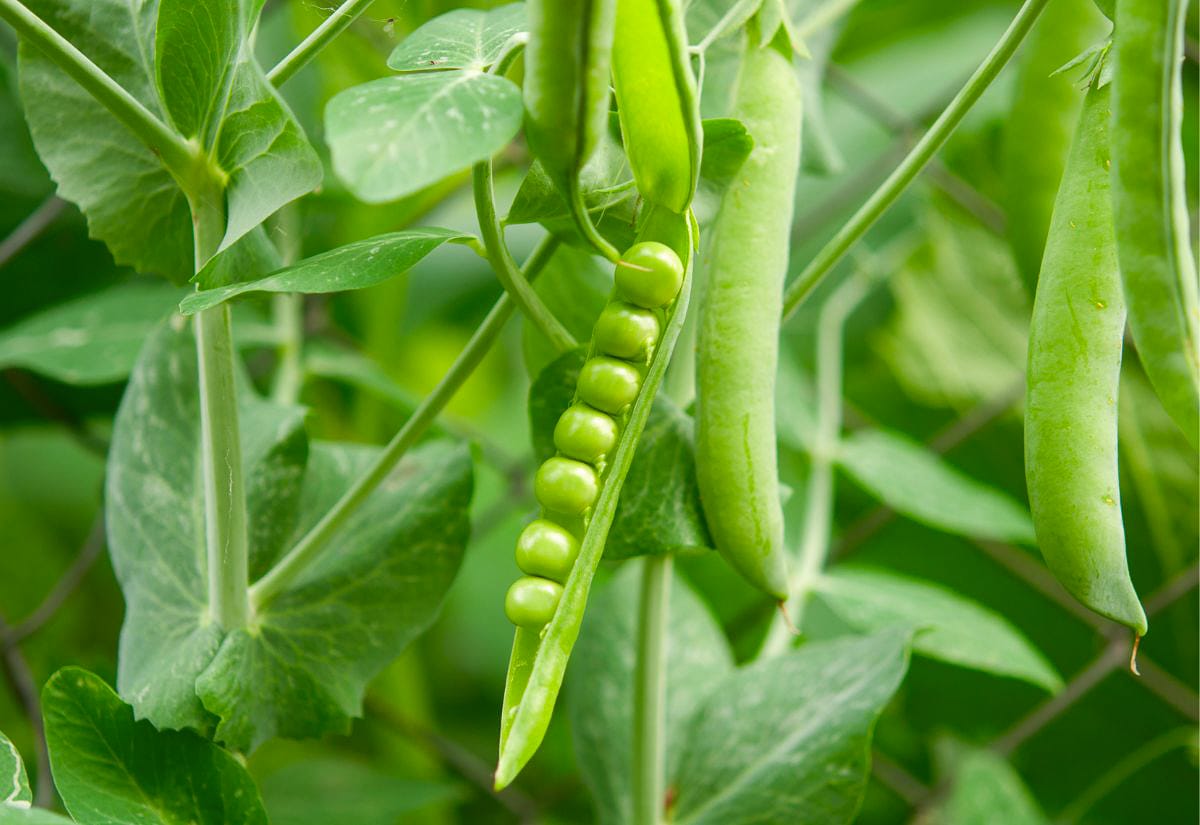
Zucchini
If you want to feel like a gardening rockstar, plant zucchini. They explode in warm weather and just keep coming. They like space to sprawl, but they’re very forgiving.
Germination: 5–7 days
Best season: Summer
Good for containers? Only in very large pots
Troubleshooting: Powdery mildew is common in humid climates. Good air circulation helps.
Carrots
Carrots take a little longer to mature, but they’re still beginner-friendly if you give them loose, rock-free soil. I’ll admit, carrots taught me patience. They sprout slowly and they don’t love being crowded, but once they’re established, they grow steadily.
Germination: 10–21 days
Best season: Spring or fall
Good for containers? Yes, in deep pots
Troubleshooting: Patchy germination is usually caused by dry soil. Carrots are slow starters unless that top layer stays consistently damp. If you’re curious what else seeds need to sprout well, here’s a deeper look at how to give seeds the conditions they rely on.
Spinach
Spinach loves cool weather and tends to bolt in heat, but it’s one of the easiest greens to grow in spring or fall. If you’re working with limited sunlight, spinach will still keep you fed.
Germination: 6–10 days
Best season: Spring and fall
Good for containers? Yes
Troubleshooting: If leaves yellow early, it’s often inconsistent watering.
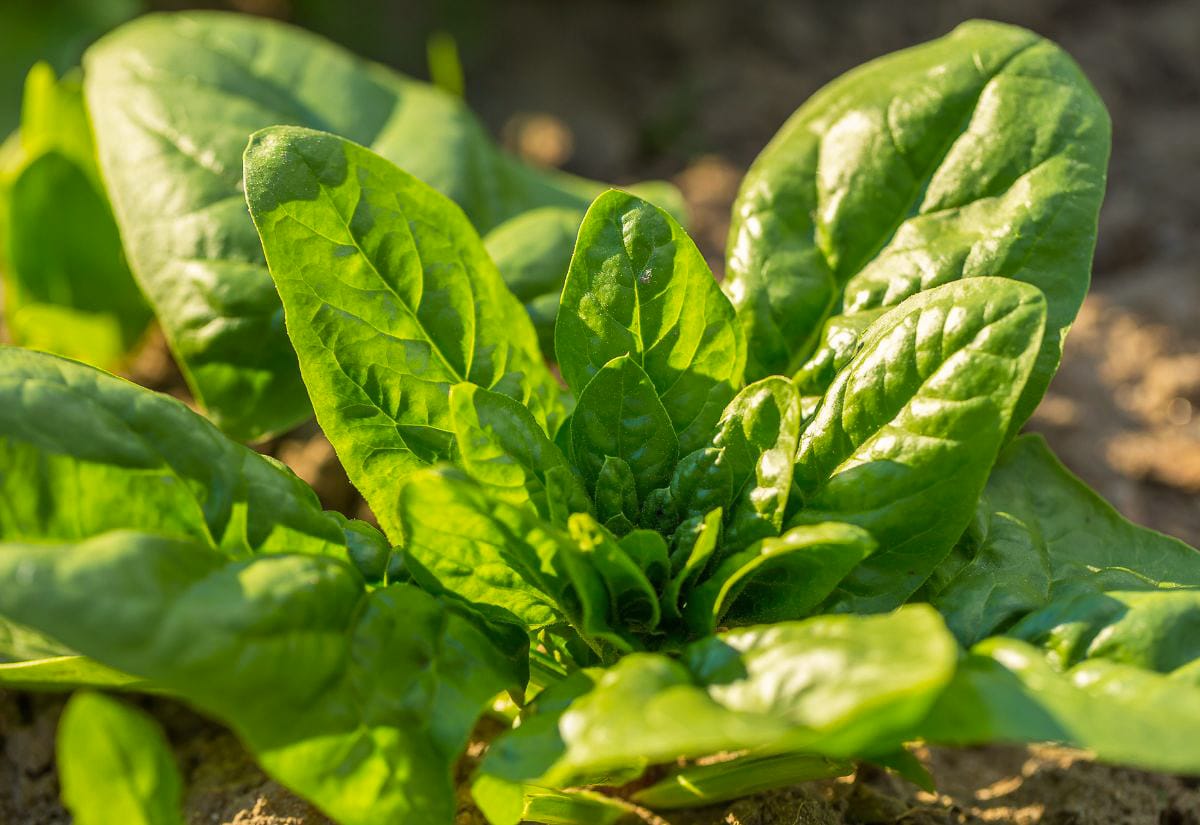
Beginner-Friendly Veggies That Thrive in Pots
So many beginners assume they need a huge garden to grow food, but containers can be incredibly productive. If you’re short on space or sunlight, begin with veggies that grow happily in small spaces:
- Lettuce
- Spinach
- Radishes
- Bush beans
- Peas
Just make sure your pots drain well and you’re using a fresh potting mix (not garden soil, which turns to concrete in containers). If you’re unsure what will do well where you live, I’ve got a separate guide on choosing varieties that fit your growing zone.
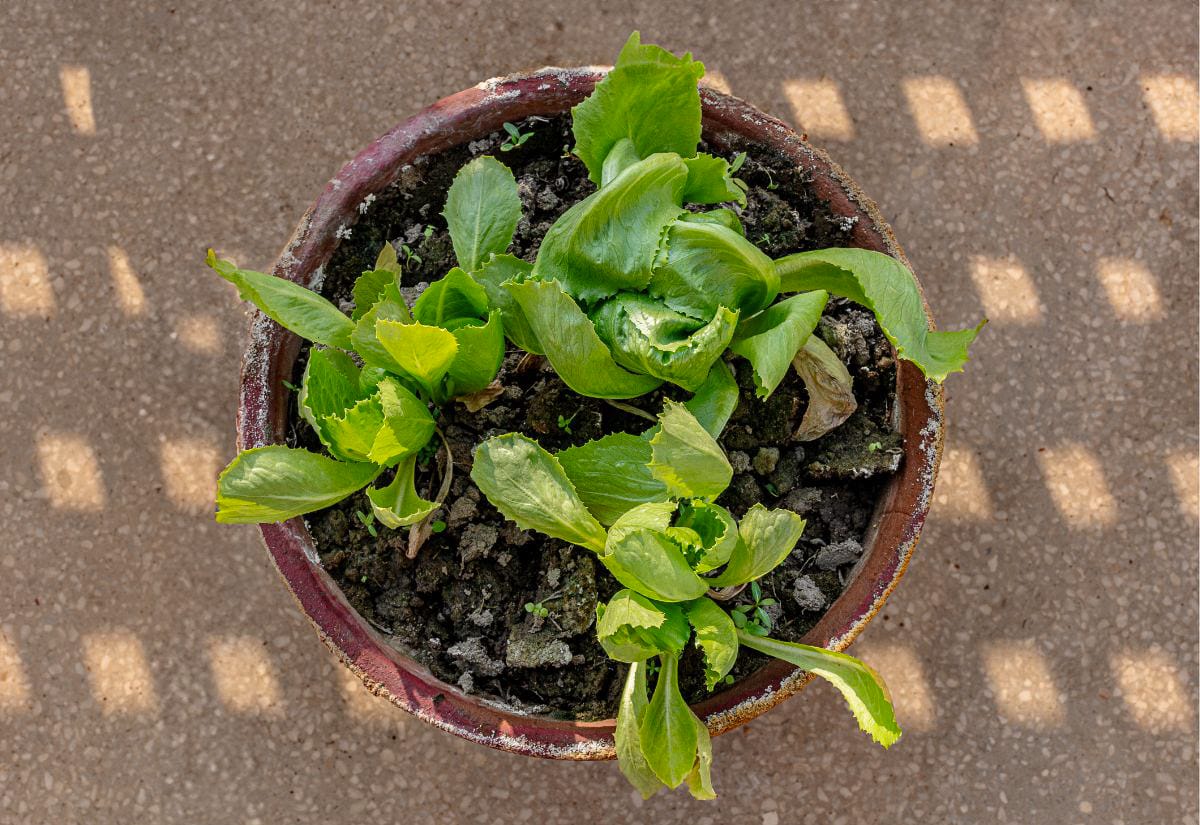
The Best Time to Plant Each of These Crops
Get the timing right, and these plants become almost foolproof.
Cool-Season Seeds (Spring + Fall)
These don’t love heat, and some (like spinach) will bolt fast once summer hits.
- Lettuce
- Spinach
- Radishes
- Peas
- Carrots
Warm-Season Seeds (Late Spring + Summer)
These need warm soil to sprout well. If you’re testing old packets before planting, you can check seed viability so you don’t waste time waiting on duds.
- Beans
- Zucchini
Why Your Seeds Might Not Be Sprouting
If a seed refuses to sprout, the problem is usually one of these:
You planted too deep. One of my earliest mistakes. Most seeds only want to be planted about 1–2 times their size.
The soil dried out during germination. Carrots are notorious for this. A thin layer of burlap or cardboard helps keep the soil evenly moist.
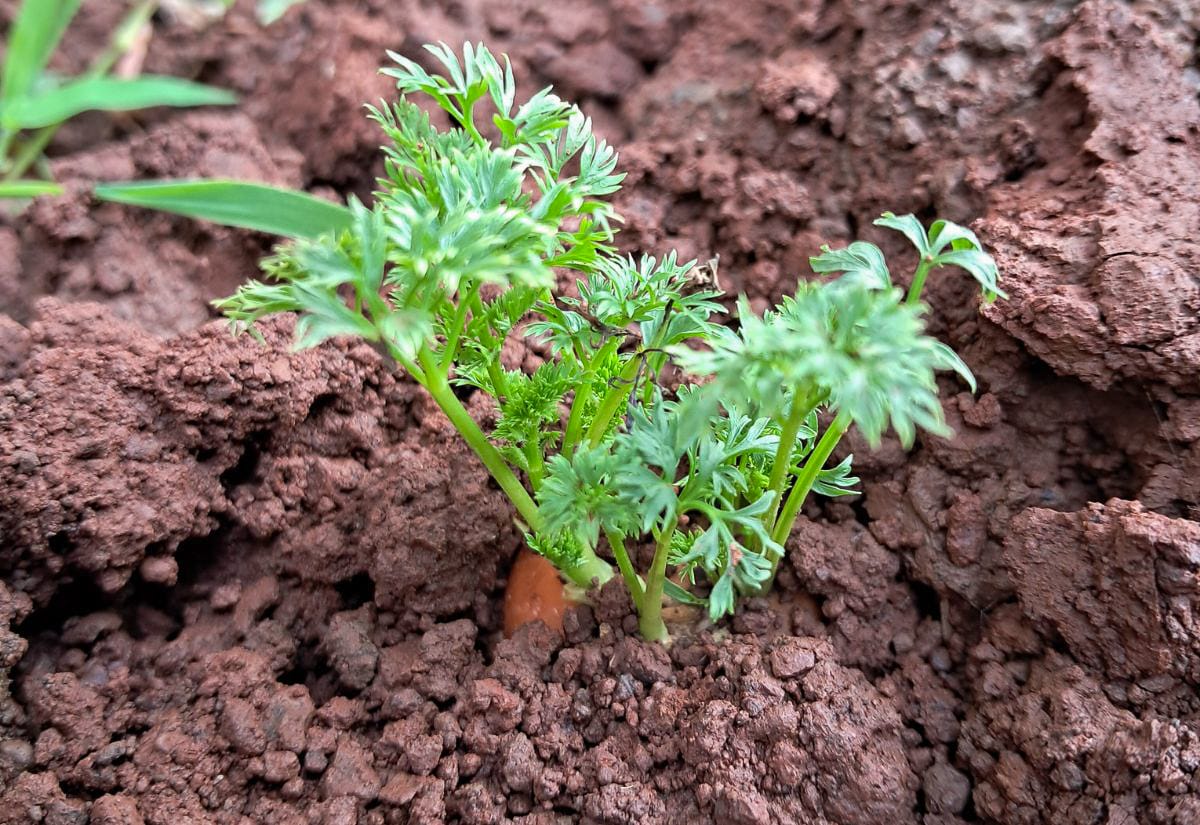
The seeds were too old. Old seeds might still be good, but I always test them first.
You’re fighting cold or compacted soil. Cool-loving seeds still won’t germinate if the soil is waterlogged or heavily packed.
If you ever find fuzzy white patches creeping across your seed-starting mix indoors, don’t panic. Here’s how to prevent mold from taking over before your seedlings even emerge.
Common Questions About Growing Veggies From Seed
These are the things beginner gardeners ask me most often.
Pin this now so it’s waiting for you when you’re ready to start your seeds.
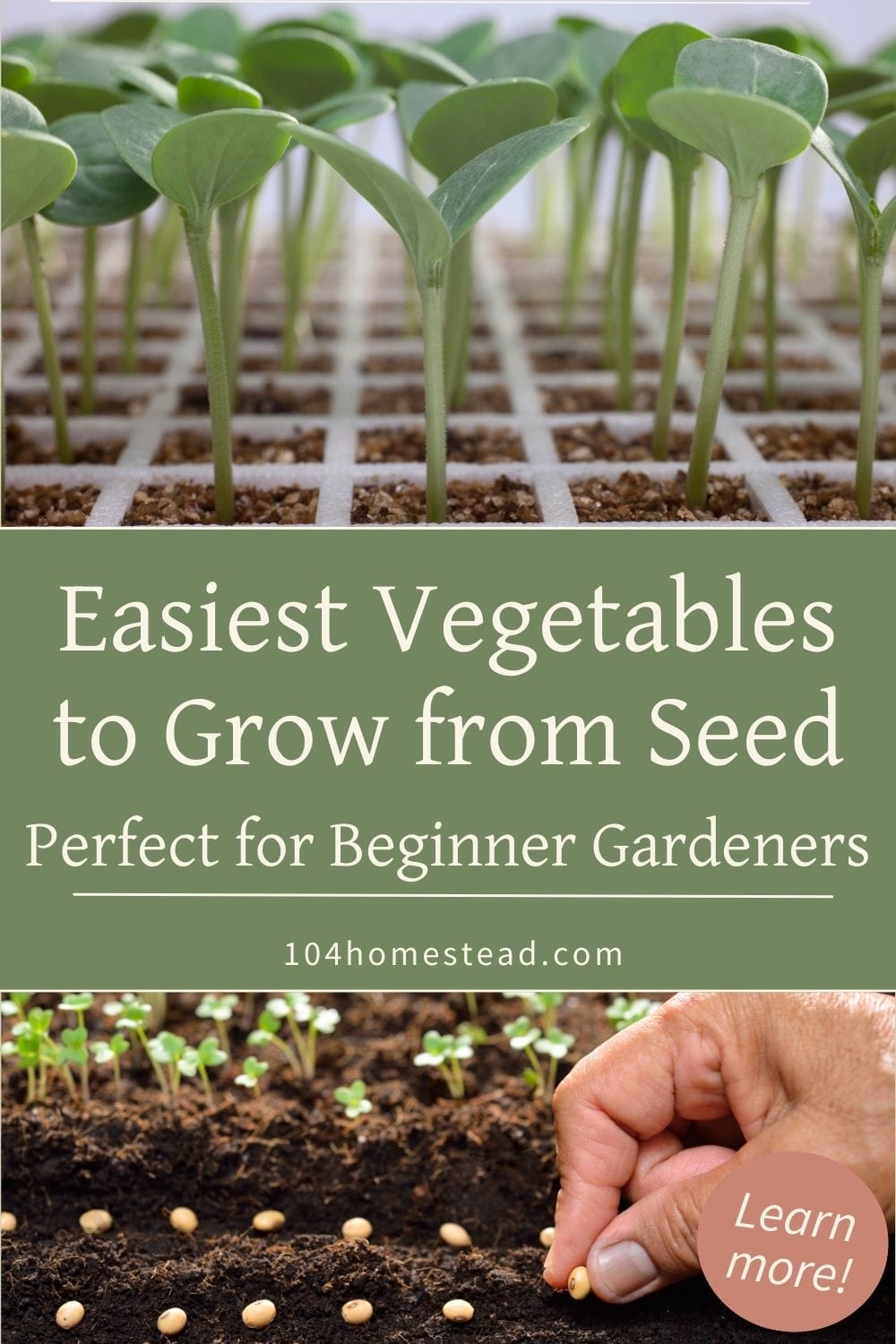
Starting from seed doesn’t have to be complicated at all. Begin with the easy stuff, keep an eye on your timing, and experiment whenever you feel like it. These beginner-friendly crops will give you quick confidence and when you spot that first sprout, it’s game over. You’re a gardener.
What are you planning to grow from seed this year? I’d love to hear your ideas or questions in the comments.




